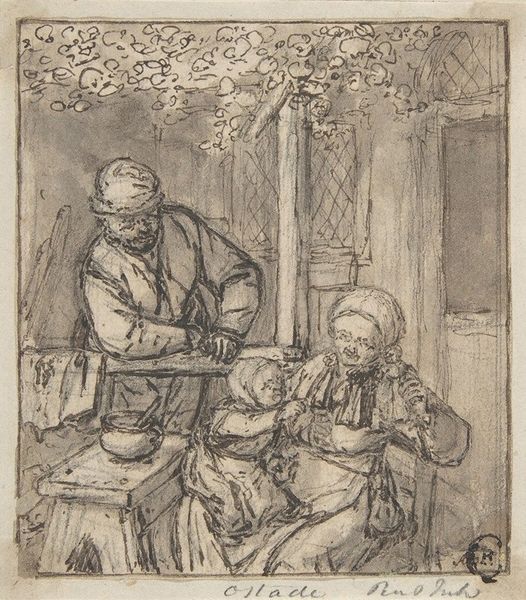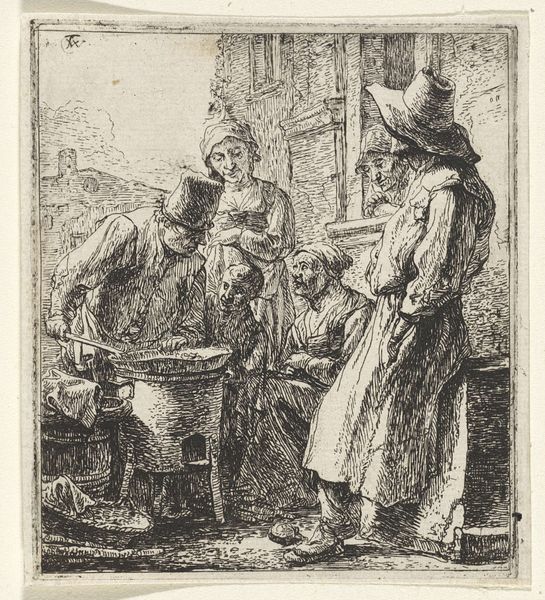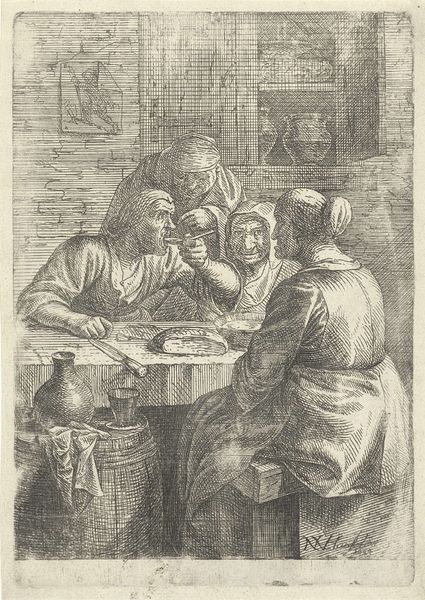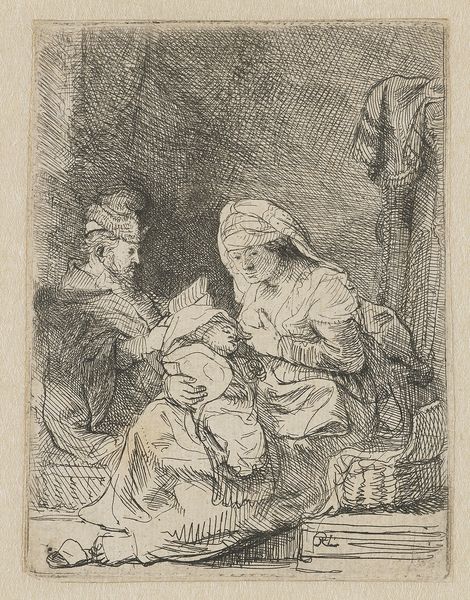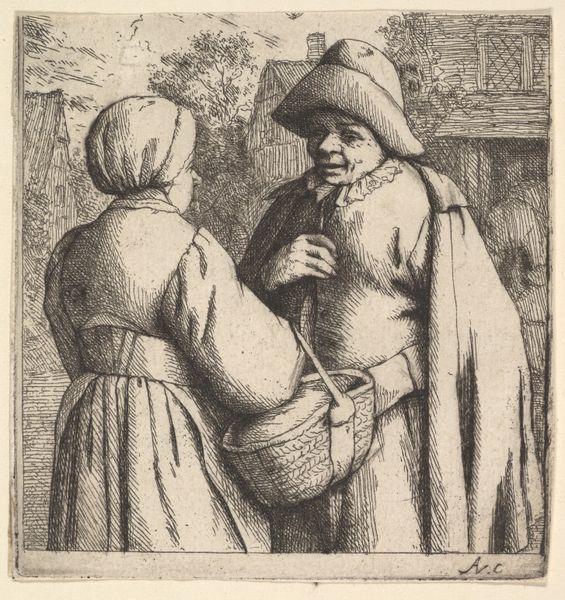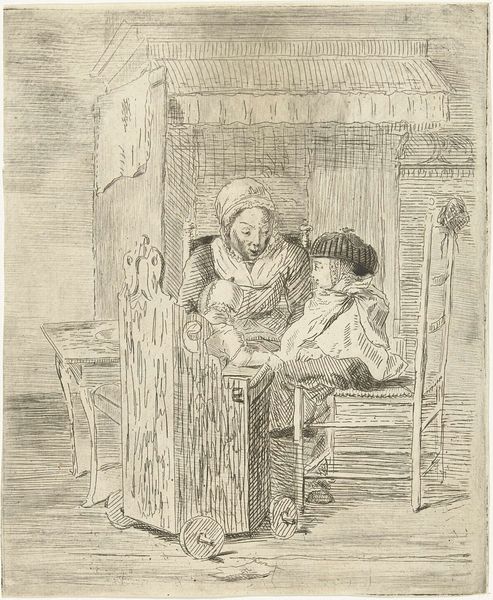
Moeder met kind op schoot dat de hand uitsteekt naar een pop, een man kijkt toe 1679
0:00
0:00
drawing, print, etching, ink
#
portrait
#
drawing
#
baroque
#
dutch-golden-age
# print
#
etching
#
ink
#
genre-painting
Dimensions: height 102 mm, width 92 mm
Copyright: Rijks Museum: Open Domain
Editor: Here we have Adriaen van Ostade’s "Mother with Child on Lap Reaching for a Doll, a Man Looking On," an etching from 1679, held at the Rijksmuseum. The ink strokes create a really intimate scene, almost like we’re peering into a private moment. What stands out to you when you look at this print? Curator: This piece offers us a glimpse into the domestic sphere of the Dutch Golden Age, but it’s also ripe for interrogation. Ostade, while celebrated, depicted mostly peasant life. Whose lives are we really seeing reflected, and through whose eyes? How might the economic realities of the time shape our understanding of the family dynamics displayed? Editor: That's an interesting point. It feels very…everyday. The figures seem caught in a candid moment, yet the artist’s choice to portray working-class life raises questions about representation and social commentary. Curator: Exactly! It's crucial to examine the context. Etchings like these were accessible to a broader audience. What narrative is being perpetuated, and who benefits from it? Consider the woman: her role appears solely maternal. How does this reinforce societal expectations of women during that period? Editor: It's unsettling to think how this image may contribute to societal expectations or gender roles of the time. But maybe it's an accurate reflection? Curator: Reflection, yes, but also construction. By understanding the power dynamics at play in 17th-century Netherlands, we can have an enlightening view of social expectations about the family. These images both reflect reality, and constructed a norm for how things "should" be. Editor: Thinking about art in this way gives me so much more to think about. Thank you for shedding some light on these aspects of societal expectations on these etchings! Curator: Absolutely. Art is never created in a vacuum; it's always in dialogue with its context, so by analyzing it, we can start to build meaningful dialogue about historical inequalities and the impact those have had on us.
Comments
No comments
Be the first to comment and join the conversation on the ultimate creative platform.

